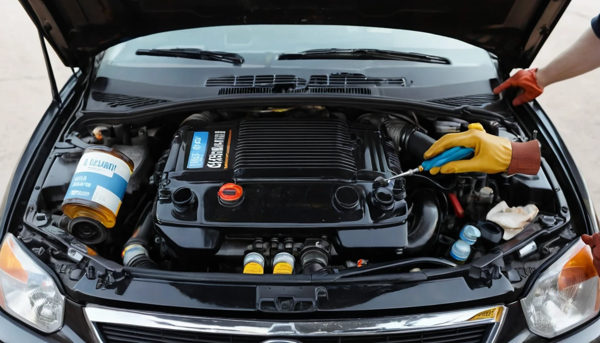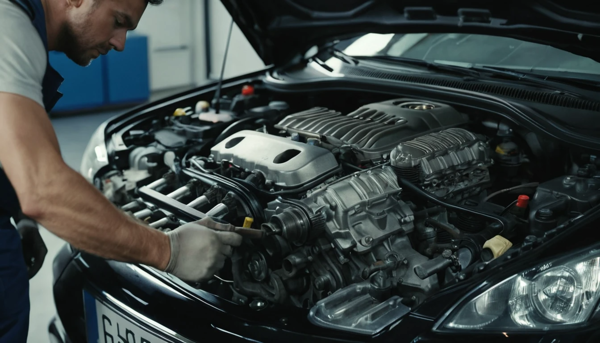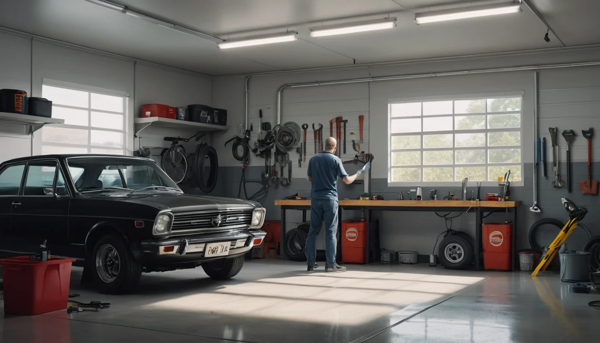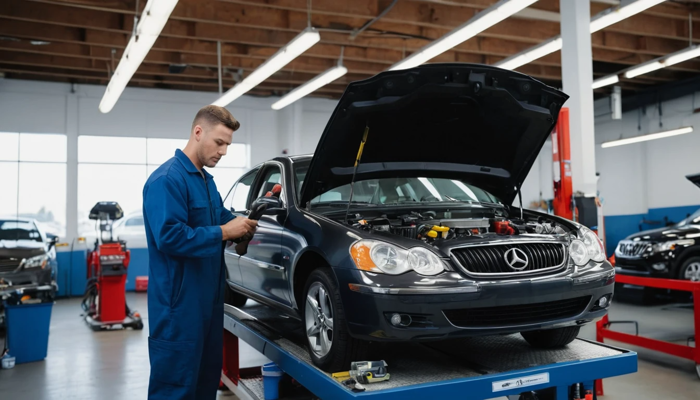How to check all car fluid levels the right way. Learn simple, step-by-step tips to keep your car running smoothly at home.
How to Check All Car Fluid Levels – Step-by-Step Guide 🛠️
Ever wonder if your car’s fluids are secretly running low—even when it seems fine? 🧐
You’re not alone. Many drivers think everything is okay if the dashboard isn’t blinking and the engine sounds normal. But, low or dirty fluids can damage your vehicle silently and cost you thousands later.
Want to avoid that?
Learning how to check all your car’s fluid levels at home takes just a few minutes. It saves you from surprise repairs.
Let’s walk through each one together. 🚗💧
🛢️ Why Checking Fluids Matters
Ignoring car fluids is like skipping water for your body. Without them, parts overheat, grind, and wear out.
Here’s what fluids do:
- Keep the engine cool 🔥
- Help you brake safely 🛑
- Make steering smooth
- Keep your transmission alive
- Improve fuel efficiency
- Prevent costly breakdowns
Bottom line? Keeping an eye on fluid levels helps your car last longer and drive safer.
🧰 What You’ll Need
Before popping the hood, grab these essentials:
- Paper towels or an old rag
- Gloves (optional)
- Flashlight (for dark areas)
- Owner’s manual
- Cool engine (never check hot!)
Safety Tip: Always park on a flat surface and turn the engine off before checking.
🔧 Engine Oil: The Lifeblood of Your Car
How to check engine oil:
- Open the hood and find the dipstick (yellow or orange handle).
- Pull it out and wipe it clean.
- Reinsert fully, then pull it out again.
- Look at the oil level and color.
Oil should be:
- Between the low and full marks
- Honey-brown (not black or gritty)
If low? Add the recommended oil type using a funnel. Don’t overfill!
💡 Tip: Check oil every month—or before long trips.
🚿 Coolant: Keeps Your Engine from Overheating
Coolant (or antifreeze) absorbs engine heat and releases it through the radiator.
How to check coolant:
- Locate the coolant reservoir (usually translucent plastic).
- Look for “LOW” and “FULL” marks on the side.
- If the level is below “LOW,” top it up only when the engine is cold.
Coolant Color Guide:
| Color | Type | Common Use |
|---|---|---|
| Green | Inorganic Additive | Older cars (pre-2000s) |
| Orange | Organic Acid Tech | Newer GM cars |
| Pink/Blue | Hybrid/OAT Mix | European and Asian brands |
⚠️ Never open the radiator cap when hot! It can cause burns.
⚙️ Transmission Fluid: Smooth Shifting Essential
Transmission fluid makes your car’s shifts smooth.
How to check it:
- Automatic cars:
- Start the engine and park.
- Find the transmission dipstick at the back.
- Check it like you do engine oil.
- Manual cars:
You need a mechanic or a lift to see it. There’s no dipstick.
What to Look For:
- The fluid should be pinkish/red and clean.
- If it smells burnt or is dark, it’s time to change it.
📝 Make sure you use the right type—wrong fluid can harm your transmission!
💦 Brake Fluid: Vital for Safe Stops
Dirty or low brake fluid can make stopping hard. 😬
Steps to check brake fluid:
- Find the brake fluid reservoir at the back of the engine bay.
- It’s clear and labeled.
- The fluid should be between “MIN” and “MAX.”
Brake Fluid Guide:
| Fluid Type | Color | Change Interval |
|---|---|---|
| DOT 3 | Pale yellow | Every 2 years |
| DOT 4 | Clear to amber | Every 2–3 years |
| DOT 5 | Purple | Rare/special use |
⚠️ If it’s dark or low, it might mean a leak—get it checked ASAP.
🌀 Power Steering Fluid: For Smooth Turns
Stiff steering? Check your power steering fluid.
How to check it:
- Find the reservoir at the front or side.
- Look for min/max markers or a dipstick on the cap.
- The fluid should be full and clean.
If it’s low or foamy, air or leaks might be the problem. 🛠️
🧼 Windshield Washer Fluid: Visibility Booster
This one’s easy, but very important.
To check:
- Find the cap with the windshield symbol (usually blue).
- Open and look inside.
- Fill it with washer fluid—not plain water (which can freeze or clog).
👀 Running low on this can leave you driving blind in messy weather.
🔋 Battery Fluid: Often Overlooked
If you have an older battery, you might need to check the fluid.
How:
- Remove the plastic cover.
- Look for caps labeled “+” or “–”.
- The fluid should cover the internal plates.
💧 Use only distilled water—tap water can harm the battery.
🚙 Differential Fluid: For Rear-Wheel or 4WD Vehicles
If you tow or go off-road, differential fluid is key.
Check involves:
- Lifting the car
- Unscrewing the fill plug
- Checking if fluid touches the edge
This one’s best left to a mechanic unless you’re experienced.
❄️ AC Refrigerant: Tricky But Important
This isn’t a fluid you can just pop the hood and check—but low refrigerant means weak cooling. 🥵
Signs it’s low:
- Warm air from AC
- Hissing noise
- AC clutch not engaging
For a precise reading, you’ll need a pressure gauge or to visit a pro.
🚗 Fuel System Cleaner: Add, Don’t Check
Not a fluid you check—but it’s smart to use a cleaner occasionally.
Why?
It removes gunk from fuel injectors and helps engine efficiency.
How to use:
- Pour a bottle into a full gas tank every 3,000–5,000 miles.
🧪 A clean fuel system = better mileage + smoother driving.
📋 Quick Reference Table for All Fluids
| Fluid Type | Check Frequency | Signs It’s Low/Due |
|---|---|---|
| Engine Oil | Monthly | Loud engine, black oil |
| Coolant | Monthly | Overheating, low reservoir |
| Transmission Fluid | Every 30k miles | Jerky shifts, burnt smell |
| Brake Fluid | Every 6 months | Soft pedal, dark fluid |
| Power Steering | Monthly | Stiff steering, whining noise |
| Washer Fluid | Monthly | Dirty windshield, no spray |
| Battery Water | Every 6 months | Slow starts, corrosion |
| AC Refrigerant | Annually | Warm air from AC |
🧼 How Often Should You Check Fluids?
Here’s a quick guide:
- Monthly: Oil, coolant, power steering, washer
- Every 6 months: Brake fluid, battery water
- Annually: Transmission, refrigerant
- Every 3,000–5,000 miles: Fuel system cleaner
🕒 Setting reminders in your phone makes it easy to stay on track.
🤔 What Happens If You Don’t Check Fluids?
Bad stuff. Really bad.
- Engine damage 💸
- Brake failure 🚨
- Overheating 🚗🔥
- Transmission slips
- Poor fuel economy
- Total breakdowns
Prevention = peace of mind. And checking takes less time than a coffee break.
🔚 Final Thoughts
Checking your car’s fluid levels is a simple way to avoid costly repairs. It keeps your car running well. You don’t need to be a mechanic. Just know what to look for.
Next time you wait for coffee, check your car. It’s easy. 🧡
Your future self and wallet will be happy.
🙋♂️ FAQs
How do I check all car fluid levels at home?
Park on a flat surface, turn off the engine. Use dipsticks or see-through reservoirs to check each fluid.
What color should my engine oil be?
It should be light brown or amber. If it’s dark, gritty, or black, change it.
Is it OK to mix coolant colors?
No. Mixing coolant types can harm your engine. Use the type your manual suggests.
How often should I check brake fluid?
Check every 6 months. If it’s dark or low, you might have a leak or old fluid.
Can I use water instead of washer fluid?
No. Water can freeze or clog the system. Use proper windshield washer fluid.
🔗 References
https://www.cars.com/articles/how-to-check-car-fluids-426818/
https://www.firestonecompleteautocare.com/blog/maintenance/car-fluid-check/
https://www.aaa.com/autorepair/articles/how-to-check-your-car-fluids







